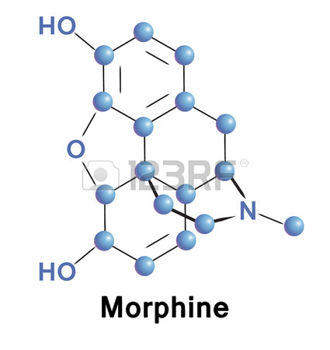Question #86743
1 Answer
Here's why that is the case.
Explanation:
A compound's percent composition essentially tells you how many grams of each constituent element you get per
In this case, morphine is said to have a percent composition of nitrogen of
Now, in order to show why this is the case, you must use the chemical formula of morphine, which is
So, each molecule of morphine contains one atom of nitrogen,
You can thus use the molar mass of morphine and the molar mass of nitrogen to find morphine's percent composition of nitrogen.
So, use the molar masses of carbon, oxygen, hydrogen, and nitrogen to find the molar mass of morphine. Since one mole of morphine contains
#17# moles of carbon,#17 xx "C"# #19# moles of hydrogen,#19 xx "H"# #3# moles of oxygen,#3 xx "O"# #1# mole of nitrogen,#1 xx "N"#
you can say that each element will contribute
#17 color(red)(cancel(color(black)("moles C"))) * "12.011 g"/(1color(red)(cancel(color(black)("mole C")))) = "204.19 g C"#
#19 color(red)(cancel(color(black)("moles H"))) * "1.00794 g"/(1color(red)(cancel(color(black)("mole H")))) = "19.15 g H"#
#3 color(red)(cancel(color(black)("moles O"))) * "15.9994 g"/(1color(red)(cancel(color(black)("mole O")))) = "48.0 g O"#
#1 color(red)(cancel(color(black)("mole N"))) * "14.007 g"/(1color(red)(cancel(color(black)("mole N")))) = "14.01 g N"#
to the molar mass of the compound. The mass of one mole of morphine will thus be
#M_"M morphine" = "204.19 g" + "19.15 g" + "48.0 g" + "14.01 g"#
#M_"M morphine" = "285.35 g"#
Now all you have to do is use the fact that one mole of morphine has a mass of
#"% N" = (14.007 color(red)(cancel(color(black)("g"))))/(285.35color(red)(cancel(color(black)("g")))) xx 100 = color(green)(|bar(ul(color(white)(a/a)color(black)(4.91%)color(white)(a/a)|)))#


